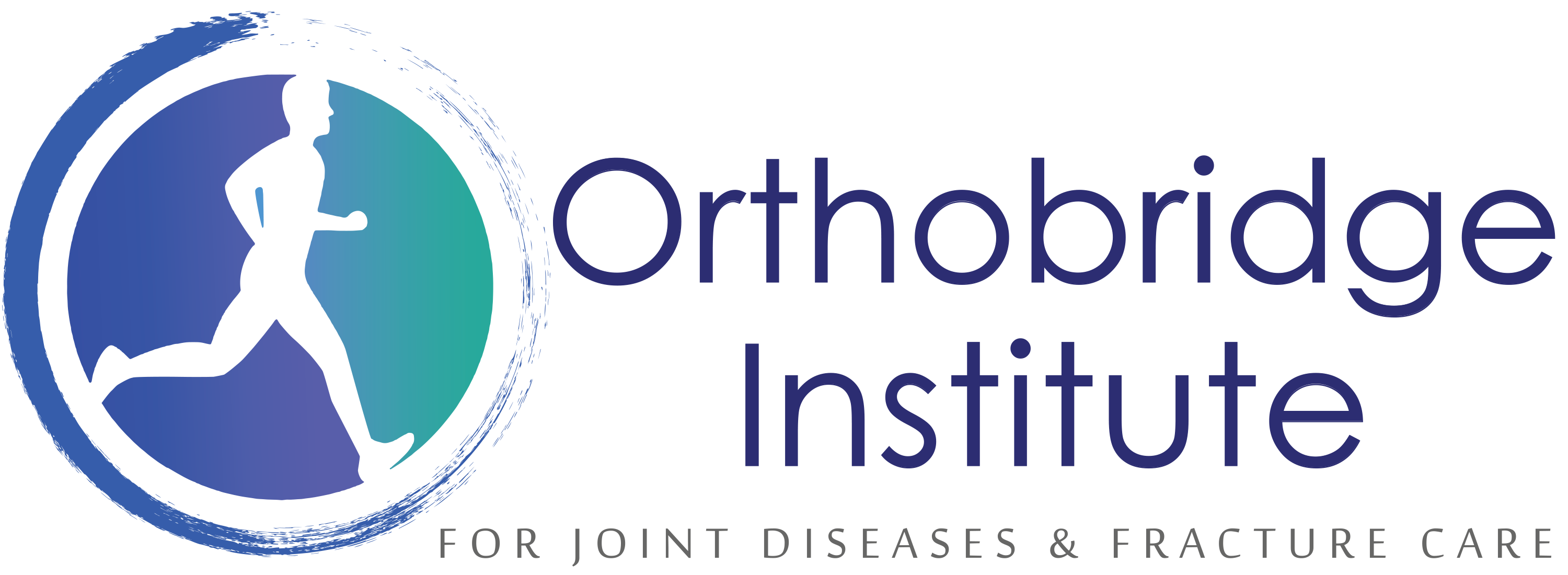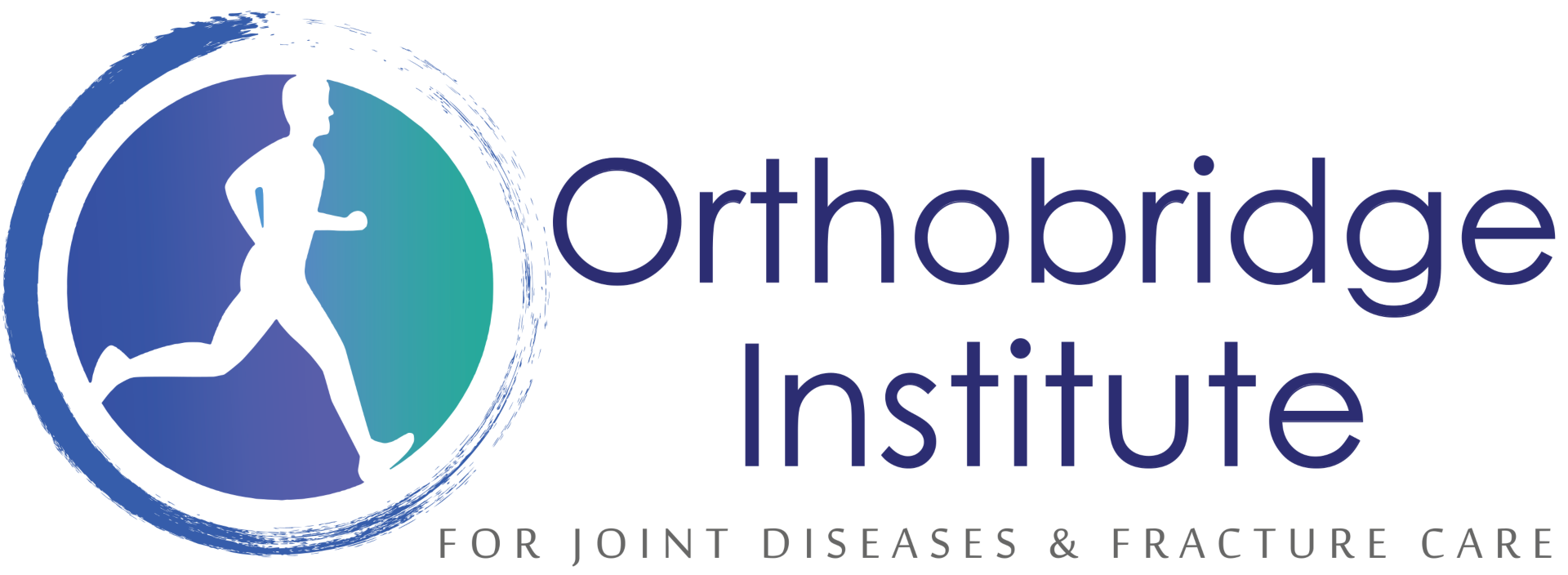ACL Tears
Learn more about some common hip causes of ACL Tears we treat at Orthobridge Orthopedic Centre.
Anterior Cruciate Ligament (ACL) Tears Treatment in Kenya
The anterior cruciate ligament (ACL) is one of four ligaments critical to stabilizing the knee joint. A ligament is made of tough fibrous material and functions to control excessive motion by limiting joint mobility. Of the four major ligaments of the knee, the ACL is the most frequently injured. When you have an injury to your ACL it often feels like the knee is “giving out.”

Symptoms
An ACL tear most often occurs during sports or athletic events. About 80% of ACL tears occur without contact with another athlete. The most typical story is an athlete suddenly changing direction (cutting or pivoting) and feeling their knee give out from under their body.
1. Hearing an Audible “Pop”
People who suffer an ACL tear usually report hearing a “pop” at the time of the injury. Most people are surprised at how loud this can be, and many bystanders have heard this from the sideline of a football or soccer game. Even if you don’t hear the pop, usually people will feel the sudden shift in the joint
2. Knee Instability
The ACL is critical to the stability of the knee joint, and when an ACL tear occurs, the joint is usually unstable. This means that the knee joint has a tendency to give out. Giving out or instability usually occurs with cutting or pivoting movements common in many sports. However, in some patients with an ACL tear, instability can occur with even simple movements while walking or getting into a car.
3. Knee Swelling and Pain
Swelling of the knee joint occurs in almost all patients with an ACL tear. This swelling is usually quite large and occurs rapidly—within minutes—of the injury.
When the ACL is torn, vessels that feed the ligament can fill the joint space with blood, a condition known as hemarthrosis. Symptoms of hemarthrosis include swelling, redness, warmth, bruising, and a bubbling sensation in the joint.
Pain associated with an ACL tear is common, although can vary depending on associated damage in and around the knee joint. Much of the pain of an ACL tear is due to the swelling of the joint.

Causes
Ligaments are strong bands of tissue that connect one bone to another. The ACL, one of two ligaments that cross in the middle of the knee, connects your thighbone to your shinbone and helps stabilize your knee joint.
ACL injuries often happen during sports and fitness activities that can put stress on the knee:
- Suddenly slowing down and changing direction (cutting)
- Pivoting with your foot firmly planted
- Landing awkwardly from a jump
- Stopping suddenly
- Receiving a direct blow to the knee or having a collision, such as a football tackle
When the ligament is damaged, there is usually a partial or complete tear of the tissue. A mild injury may stretch the ligament but leave it intact.

Risk factors
There are a number of factors that increase your risk of an ACL injury, including:
- Being female — possibly due to differences in anatomy, muscle strength, and hormonal influences
- Participating in certain sports, such as soccer, football, basketball, gymnastics, and downhill skiing
- Poor conditioning
- Using faulty movement patterns, such as moving the knees inward during a squat
- Wearing footwear that doesn’t fit properly
- Using poorly maintained sports equipment, such as ski bindings that aren’t adjusted properly
- Playing on artificial turf
Prevention
Proper training and exercise can help reduce the risk of ACL injury. A sports medicine physician, physical therapist, athletic trainer, or another specialist in sports medicine can provide assessment, instruction, and feedback that can help you reduce risks.
Measures to reduce ACL injury include:
- Exercises to strengthen the core — including the hips, pelvis, and lower abdomen — with a goal of training athletes to avoid moving the knee inward during a squat
- Exercises that strengthen leg muscles, particularly hamstring exercises, to ensure an overall balance in leg muscle strength
- Training and exercise emphasizing proper technique and knee position when jumping and landing from jumps
- Training to improve technique when performing pivoting and cutting movements
- Training to strengthen muscles of the legs, hips, and core — as well as training to improve jumping and landing techniques and to prevent inward movement of the knee — may help to reduce the higher ACL injury risk in female athletes.

Treatment
1. First Aid is the immediate form of treatment. These first-aid tips will reduce swelling and pain. Use the RICE method. The letters stand for;
- R-Rest the knee
- I- put Ice on it
- C- Use an elastic bandage to give gentle Compression to the knee
- E- Elevate the leg by propping it up above the level of your heart. And at first, it’s also important to move your leg as little as possible.
2. Take over-the-counter pain medicine. Be safe with medicines. Read and follow all instructions on the label.
3. You may need to walk with crutches and use a knee immobilizer to keep your knee still for the first few days after the injury.
4. Your knee will need to be checked by your doctor. It’s important to get treatment. If you don’t, the injury may become a long-lasting problem. There are two ways to treat the injury:
5. Exercises and training, also called rehab. It takes several months of rehab for your knee to get better.
6. Surgery. You and your doctor can decide if rehab is enough or if surgery is right for you.
If you have surgery, you will also have several months of rehab afterward.
Your treatment will depend on how much of the ACL is torn, whether other parts of the knee are injured, how active you are, your age, your overall health, and how long ago the injury occurred.
There are three main treatment goals:
- Make the knee stable if it is unsteady, or at least make it stable enough to do your daily activities.
- Make your knee strong enough to do all the activities you used to do.
- Reduce the chance that your knee will be damaged more.
Hear from some of our patients
Out of country patients
Because of Col (Dr) Adari’s extensive training and experience in elbow arthroscopy, patients travel from all areas of the world for their elbow arthroscopy in Kenya.
If you are an out of the country patient, feel free to let us know so we can accommodate an appropriate time for your consultation with Col (Dr) Adari.
Col (Dr) Adari is known as a top-rated orthopedic & trauma surgeon for elbow arthroscopy in Nairobi, Kenya, and across East Africa, Central Africa, and West Africa.
If you are work – traveling expatriate on diplomatic missions, feel free to contact us so we can accommodate an appropriate time best suited to you for your consultation with Col (Dr) Adari.
Contact us today to reserve your consultation, we are more than happy to assist you with any queries you may have prior to seeing the doctor.
Our Affiliations










